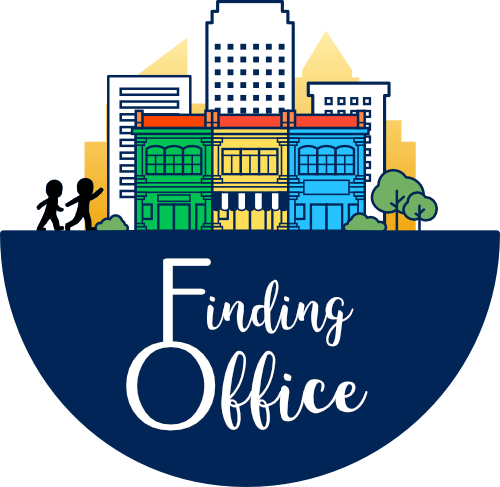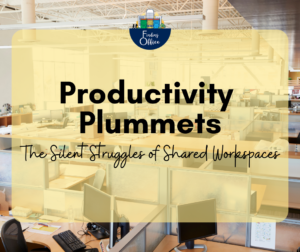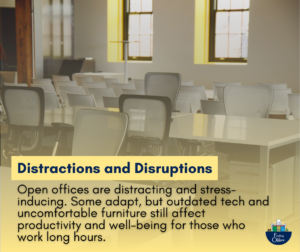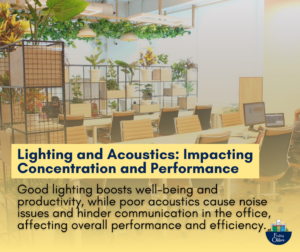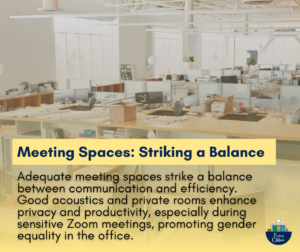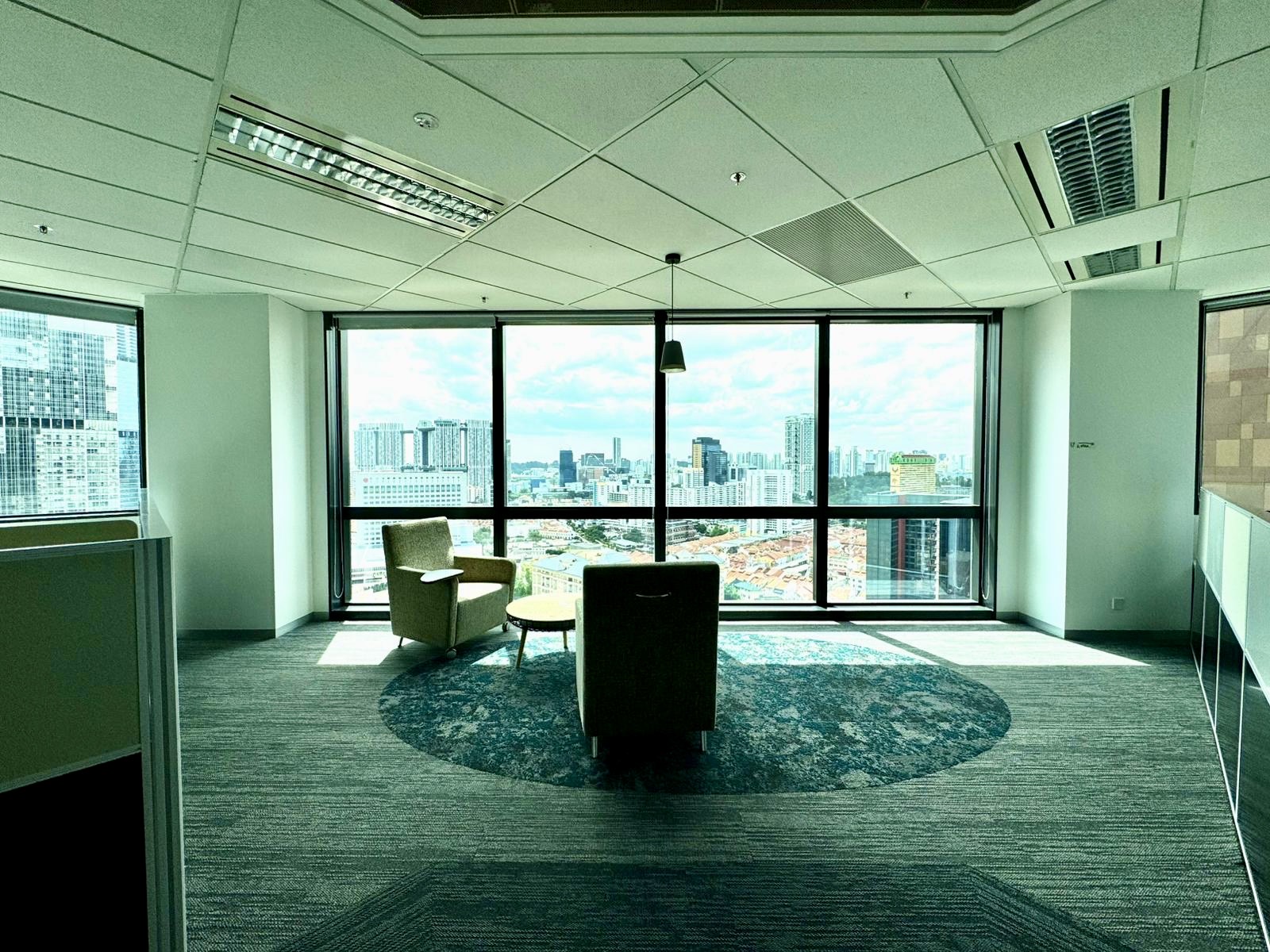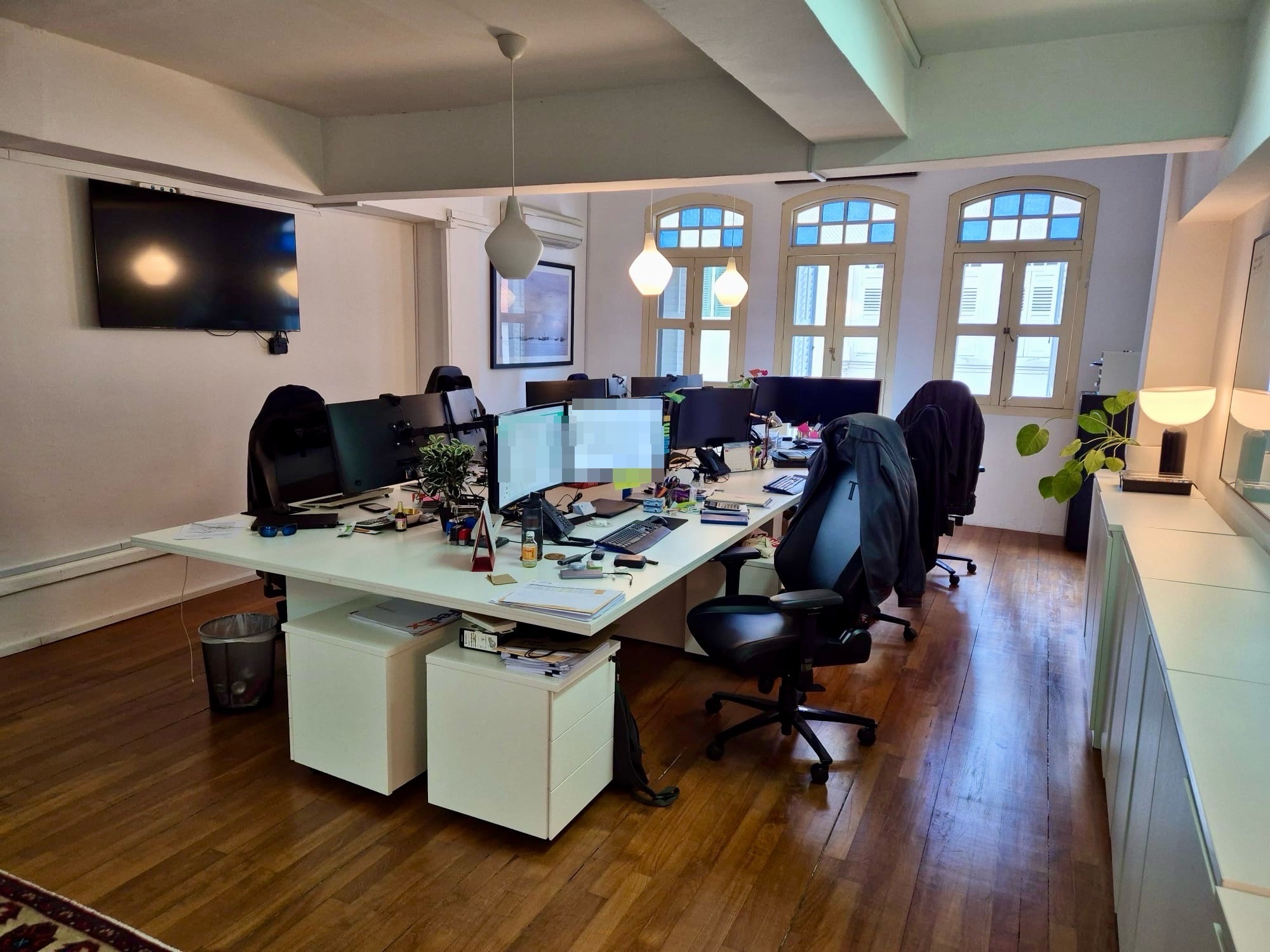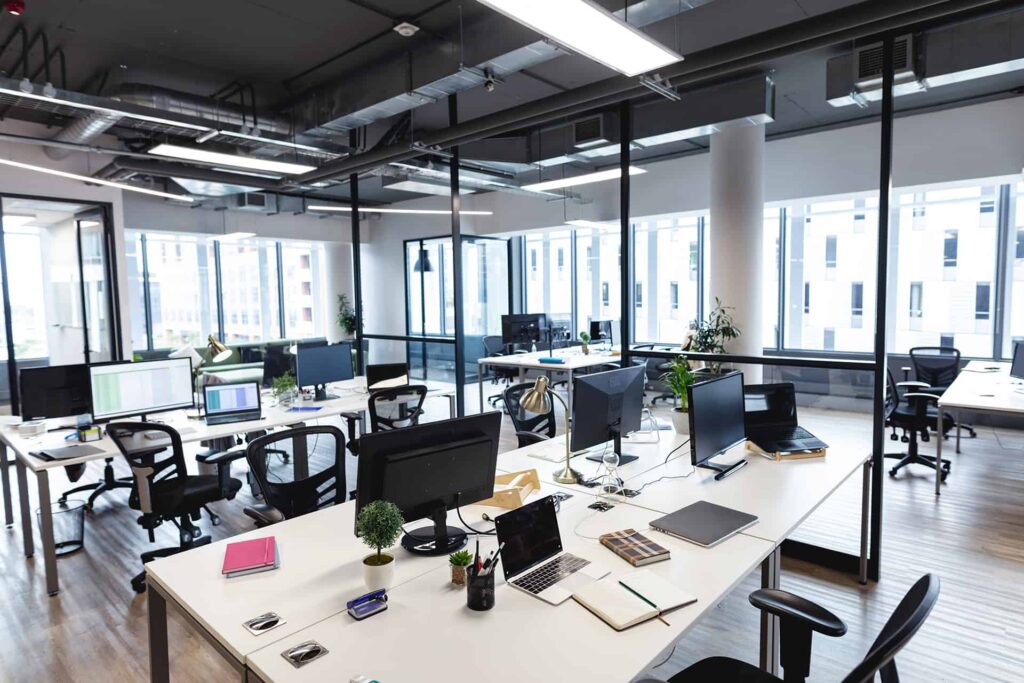Open Offices: Distractions and Disruptions
Open offices can be highly disruptive, causing a multitude of distractions. Individuals possess varying learning capacities, and for those prone to swift diversions, emotions such as stress, anxiety, and uncertainty find it easier to take hold in open-plan environments.
Nonetheless, some employees operate within their personal spaces despite the presence of a multitude of individuals. Consequently, they face the predicament of avoiding any disturbances or consequences.
Outdated technology can hinder productivity. This also demands more energy and monitoring. Uncomfortable furniture adds to physical discomfort and reduces productivity for employees who spend extended hours at work.
Lighting and Acoustics: Impacting Concentration and Performance
There needs to be more lighting and good acoustics to impact concentration and performance in the office significantly. Adequate lighting is essential for human well-being in the workspace; it helps the team gauge the weather and provides the right energy, fostering a positive environment.
On the other hand, inadequate acoustics lead to excessive noise and hinder communication, thereby reducing overall activity and productivity.
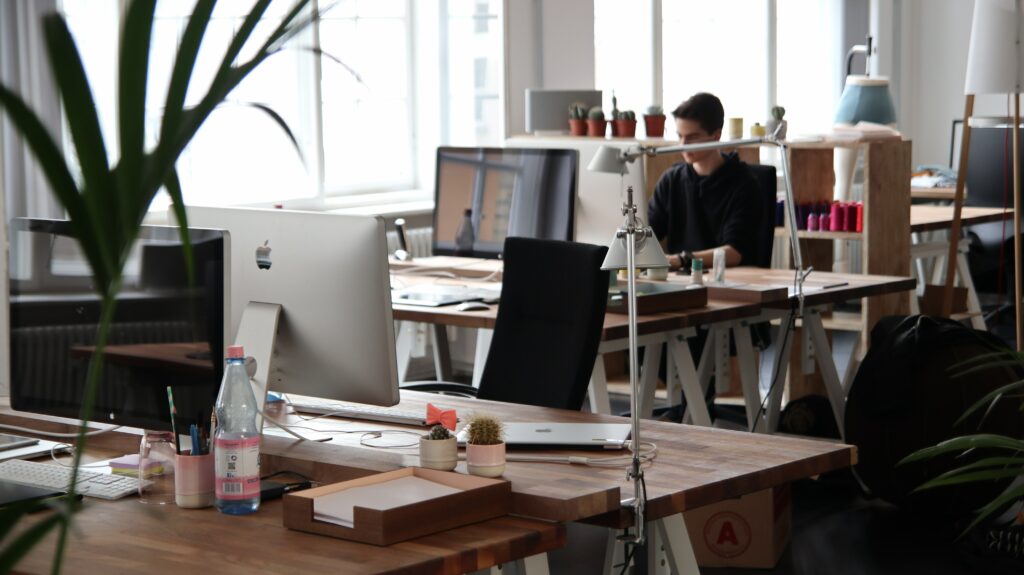
Temperature and Airflow: Balancing Individual Preferences
This situation is quite tricky because everyone’s temperature readiness differs. What might feel cold to many could be comfortable, and what you find suitable might feel too warm for others. Typically, the thermostat is set between 23 to 25 degrees Celsius, and adjustments can be made based on individual preferences. This could lead to some competition in temperature regulation, aiming for fairness across the office environment.
Airflow also presents a subjective aspect. Its effectiveness depends on factors like window orientation and sunlight exposure. If your unit faces a window without direct sunlight, it might heat up more frequently. Generally, well-designed buildings with proper ventilation can effectively circulate air and maintain a healthy separation from outside pollutants.
Meeting Spaces: Striking a Balance
Regarding meeting spaces, there’s a balance to strike. Communication is crucial, but excessive meetings can be a waste of time.
In a well-designed meeting space, staff can use the area best. When someone is conducting a meeting, and the materials have good acoustics, the conversation naturally remains contained. Having private meeting rooms offers a higher level of privacy for attendees. Conversely, offices needing such arrangements can prove disruptive for users. This is particularly true during Zoom meetings, where sensitive information might be discussed. Ensuring proper meeting spaces can contribute to gender equality within the office environment by avoiding divisions that could otherwise negatively impact.
Reduced Productivity and Job Satisfaction
One specific pain point experienced by employees in a shared workspace or hot desking arrangement is reduced productivity and job satisfaction. This aligns closely with the previous question.
Moreover, businesses can encounter significant productivity setbacks due to poorly planned workspace design. If the space is adequately prepared, optimal space utilization becomes manageable, reducing efficiency.
Conclusion: The Importance of Workspace Design
To sum up, the design of office spaces is a crucial element in today’s work environment. How offices are arranged, the furniture used, the technology integrated, the lighting and sound, and even the meeting areas impact how well employees can work together and be productive. It’s clear that open offices have their challenges, and adjustable furniture and up-to-date technology are significant. Good lighting and sound are essential for concentration, and proper meeting spaces promote effective communication. In a world where work constantly evolves, the workspace design plays a significant role in shaping successful work experiences.
